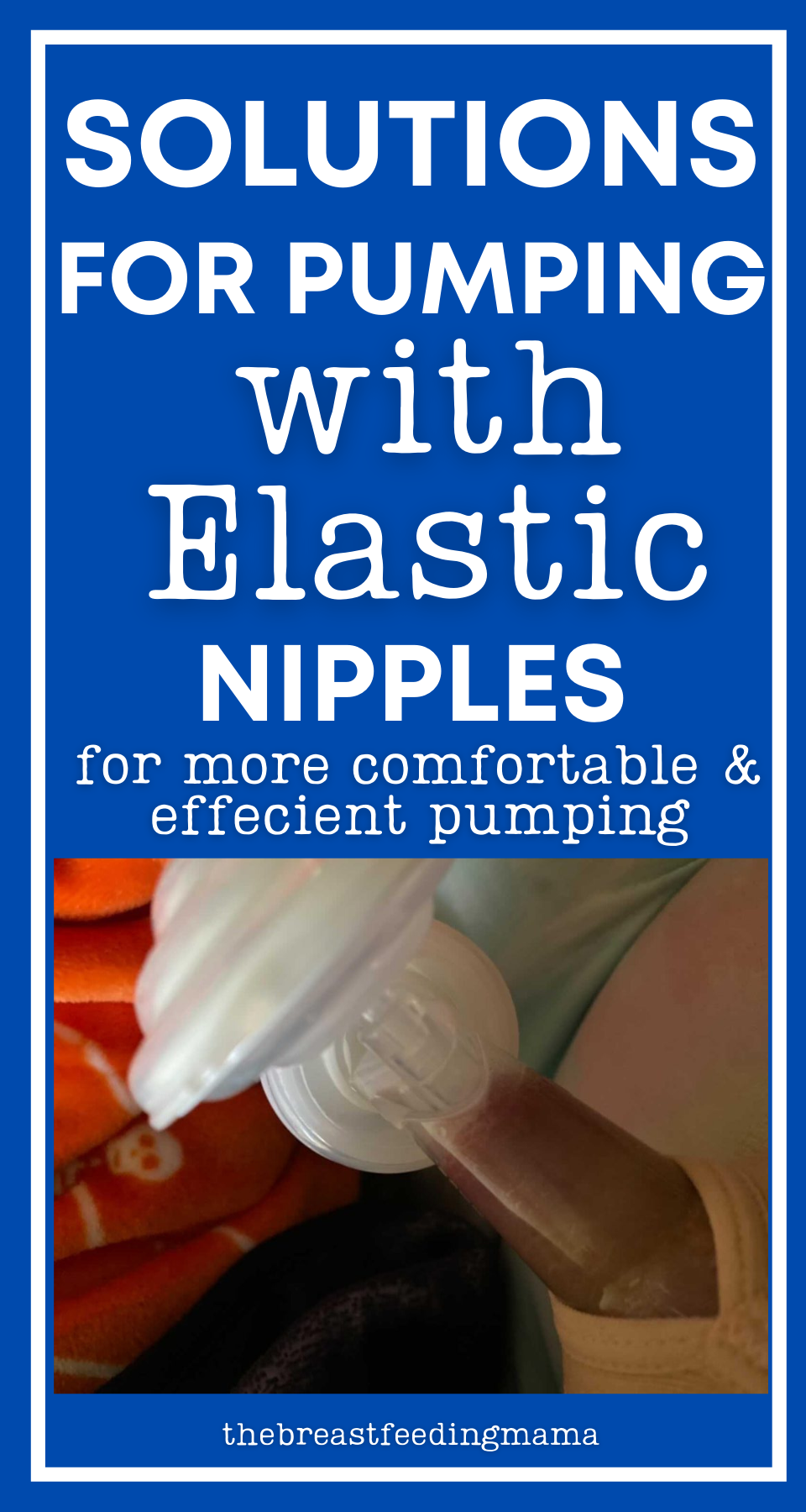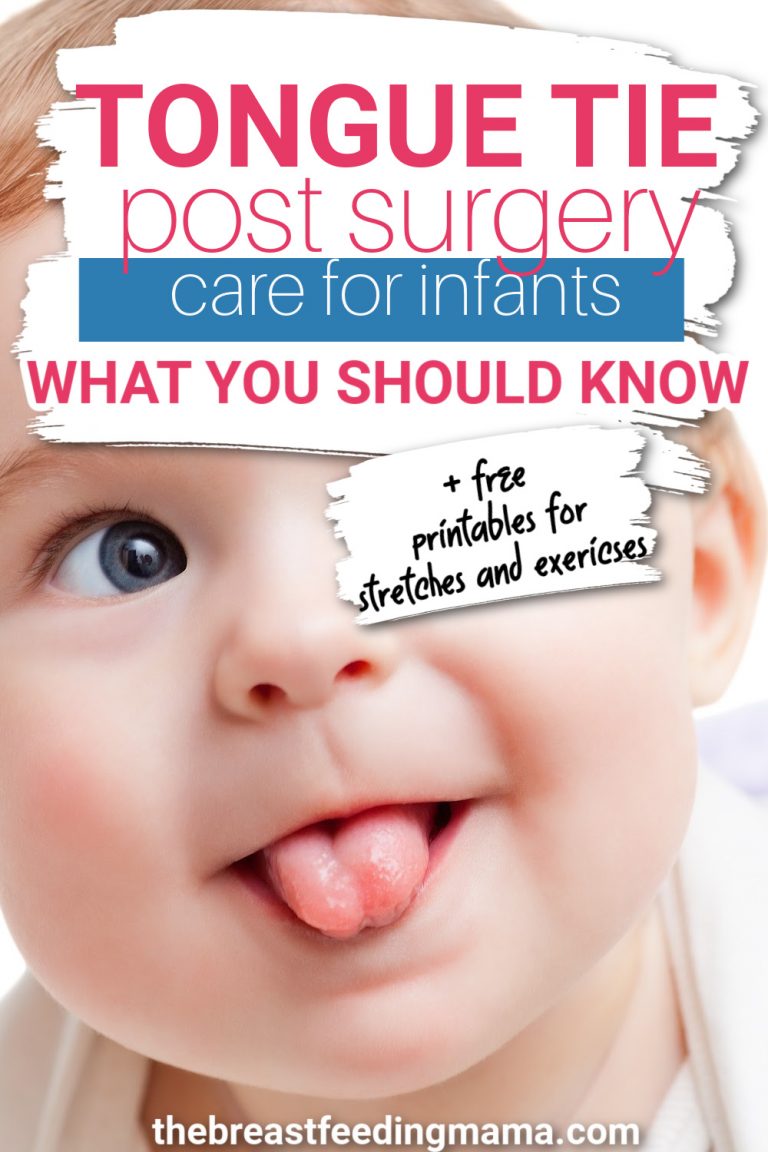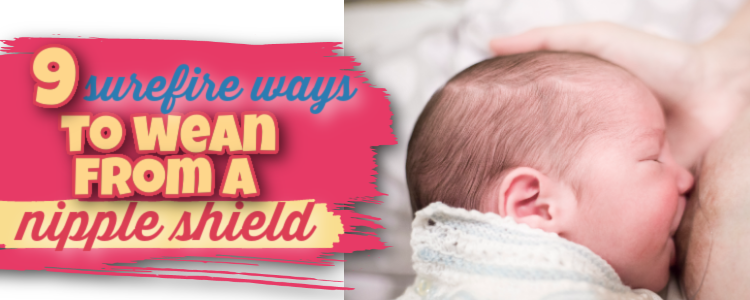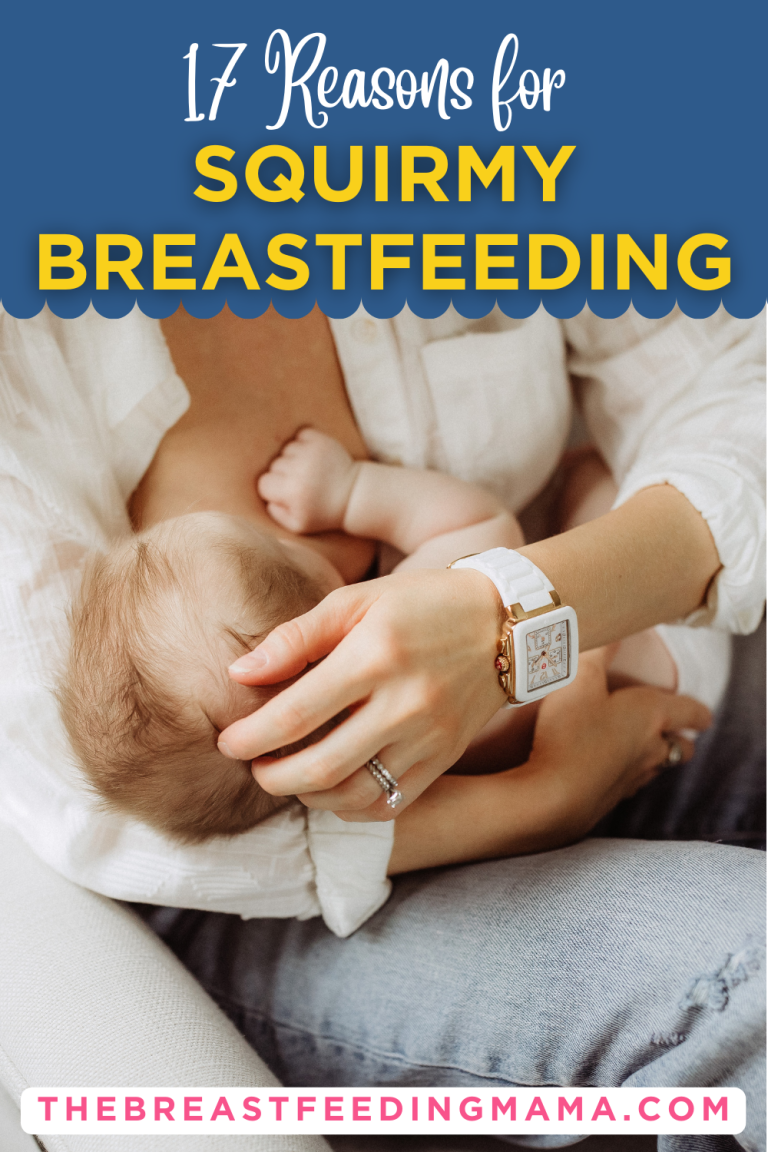6 Elastic Nipple Solutions for More Comfortable Pumping
Pumping shouldn’t be uncomfortable – but ofttimes it is. One of the biggest culprits is elastic nipples. In this post, you’ll learn about what they are and our top elastic nipple solutions.
Pumping comes with its own set of challenges. While some choose to pump to help with pain, others find that they experience more pain than they anticipated.
One of the most common reasons I see behind pain while pumping is due to having elastic nipples. This isn’t really a topic that they teach you in your prenatal classes, and I’d be surprised if most people even knew that elastic nipples were a problem!
- What are elastic nipples?
- What problems are associated with elastic nipples?
- How Can I Tell If I Have Elastic Nipples?
- Solutions for Pumping with Elastic Nipples
- Choose the Correct Flange Size
- Adjust Pump Settings
- Monitor Water Intake
- Use Coconut Oil
- Use Two Flanges
- Beaugen Breast Cushions
- More Posts You Might Enjoy:
What are elastic nipples?
Nipples are supposed to have a little stretch to them. Too little stretch can result in flat or inverted nipples, which can present its own set of issues. Don’t be alarmed or think you have elastic nipples just because there is some stretch.
It actually isn’t a problem if you are having your nipple and areola pulled into the flange IF there are no problems with pumping or milk output. I’m a big fan of not making a problem where there isn’t one. Having the correct flange size can help a lot.
Here is a picture that was shared with me by a member of our community on Instagram. It shows what elastic nipples look like in the flange of a breast pump.
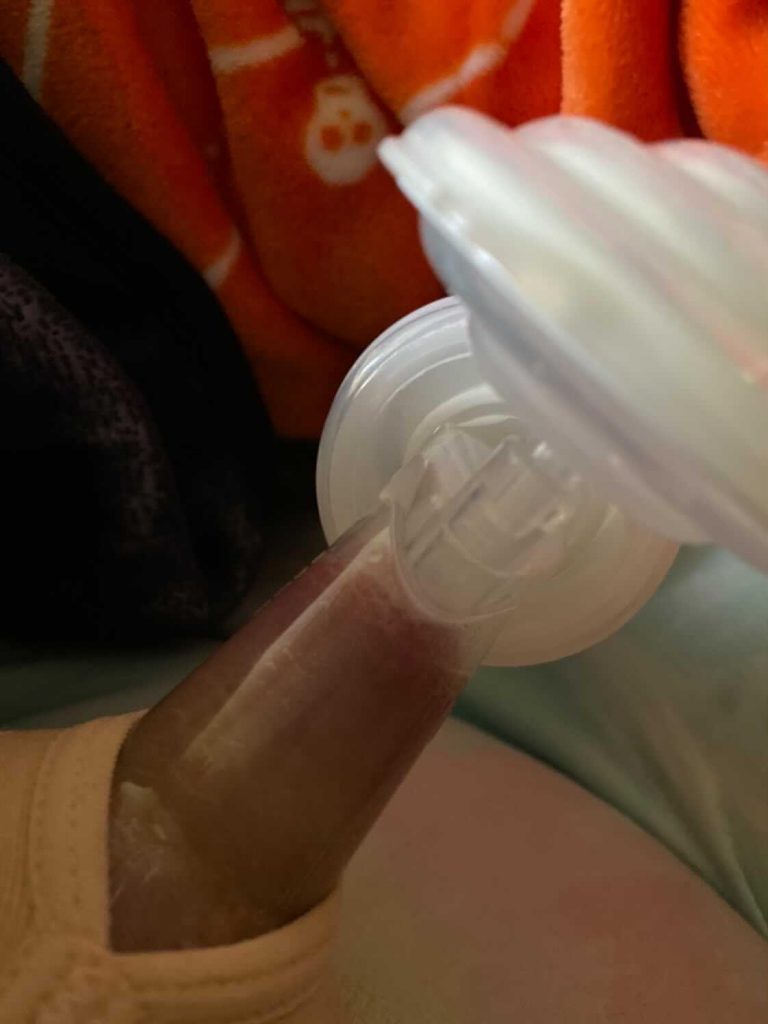
Again – if you experience this but aren’t experiencing ANY issues (which we’ll talk about next), there’s no need to worry. But if you are experiencing these issues and your nipples do look similar to this in your flange, perhaps we’ve discovered the culprit!
What problems are associated with elastic nipples?
The main issues we see are that milk supply and output can become compromised. When too much of the areola is pulled into the flange tubing, the areola can become compressed, which can block milk ducts – leading to less milk. This can also lead to clogged ducts due to inadequate milk removal.
The other issue we most often see is pain associated with pumping.
Usually, there isn’t really an issue with elastic nipples and nursing directly from the breast.
How Can I Tell If I Have Elastic Nipples?
This is a great question! It’s important to know the different signs of elastic nipples so you can fix the problem. Keep in mind that some of the signs are also signs of an ill-fitting flange.
- Nipple and areola being pulled all the way into the flange
- Pain with pumping
- Difficulty emptying the breast when pumping
- Pain with pumping
- Cracked Nipples
Consider booking a virtual lactation consult with me to troubleshoot further and make sure you have the right flange size!
Solutions for Pumping with Elastic Nipples
There are quite a few different ways to make pumping with elastic nipples a little more comfortable and efficient. You may need to try a few of these methods (or combine them together) to find something that works for you.
Choose the Correct Flange Size
I am probably starting to sound like a broken record at this point, but make sure you have the correct flange size! There are plenty of flange sizing guides online – and I would recommend finding one that is specific to your pump. I also offer virtual flange sizing if you are having trouble.
Adjust Pump Settings
If you are cranking your pump up to the top level, that might be part of the problem. Faster and stronger don’t always mean better! Sometimes if the suction power is too high, you might experience pain and have more of your nipple and areola being pulled into the flange. Popular pumps like the BabyBuddha have pretty high suction settings, so this often happens.
Monitor Water Intake
Hydration while breastfeeding is important, it is possible that increased hydration may cause more elastic nipples. I haven’t found any studies that have focused on this specifically, but there is some evidence to suggest that hydration can affect elasticity. Many suggest drinking water as a way to make skin plumper and more elastic (so preventing wrinkles).
So it’s not crazy to think that overhydration might lead to more elastic nipples. If you are struggling with elastic nipples and are drinking a ton of water, you may want to evaluate that. You SHOULD drink plenty of water – usually drinking to thirst plus a little more is adequate – but there’s no need to overhydrate while breastfeeding.
This isn’t a super-studied topic, but here are a few articles that talk about water and skin.
- Dietary water affects human skin hydration and biomechanics
- The importance of hydration for your skin
- The role water plays in skin health
Use Coconut Oil
You can try applying some coconut oil to your flanges. Many moms find this helps with comfort as well as minimizing friction and pain while pumping, as well as help with the stretching of the nipple.
This is a safe practice to do. Coconut oil is commonly used by breastfeeding mamas due to its antimicrobial properties. After you pump, just clean out your flange.
Dr. Thomas Hale said this in an Infant Risk Forum regarding coconut oil:
“Coconut oil, commonly called MCT oil (medium-chain triglyceride), is commonly used in our NICUs to add fat into the diet of premature infants. It consists primarily of 6-12 carbon atom free fatty acid triglycerides which are easily digested by all neonates and older children. It is an ideal triglyceride for infants.
As a pure oil, it has virtually no allergenic compounds. So, if you use high-grade Coconut oil, I would not be worried about its use at all, or worry about allergies.”
Make sure you use high-quality coconut oil with no extra additives.
Use Two Flanges
This is a hack I saw from my friend, Kristen, who runs the fabulous page on Instagram called Be My Breastfriend. Basically, you take your correctly sized flange as well as one that is slightly bigger. Put the correct one inside the larger one, and pump that way. Here is her demonstration and instructions:
This can be a good option before getting Beaugen cushions or something else pricier, since you may already have a couple flange sizes hanging around!
Beaugen Breast Cushions
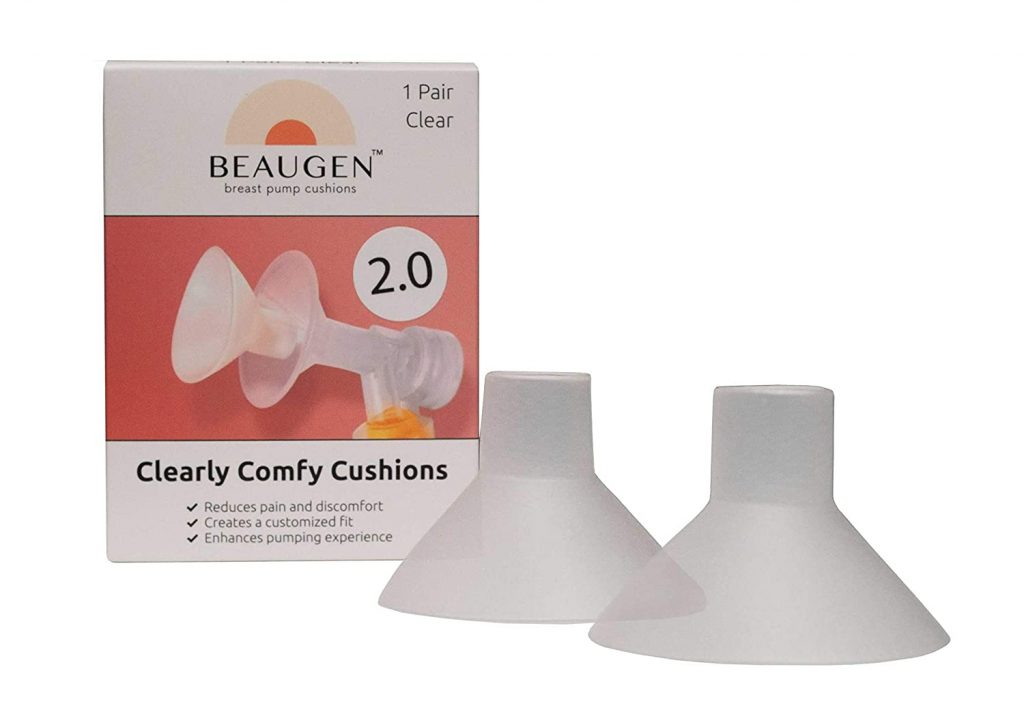
These are thin, flexible inserts that you can place inside your flange. They provide a seal with the flange which helps with the elasticity, plus it provides for a much more comfortable pumping session.
They have a couple of different sizes and decrease your flange size by about 2mm. They say they are ideal for those who need flange sizes between 19-25mm. You can check out the sizing chart here
I have heard RAVE reviews about these for helping with nipple elasticity – and just with pumping comfort in general. You can get them on Amazon or use the code TBM10 for 10% off when you shop through their website.
For even more comfort and support, some moms have success with putting the Beaugen breast cushions inside Lackteck’s baby motion flange. You may also find success with just switching to Lackteck’s flanges, as their design is a little more conducive to elastic nipples. You can get 10% off with the code TBM10.
Have you dealt with elastic nipples? What helped you the most? Be sure to comment and let us know!
More Posts You Might Enjoy:
- High Lipase Breast Milk: Why Your Breast Milk Tastes Gross (and What You Can Do)
- 8 Bottles For Breastfeeding Babies Who Refuse Bottles (From Experienced Moms)
- Why is Breastfeeding Painful? 5 Common Causes of Pain While Breastfeeding
- 5 Soothing Solutions for Sore and Cracked Nipples from Breastfeeding
